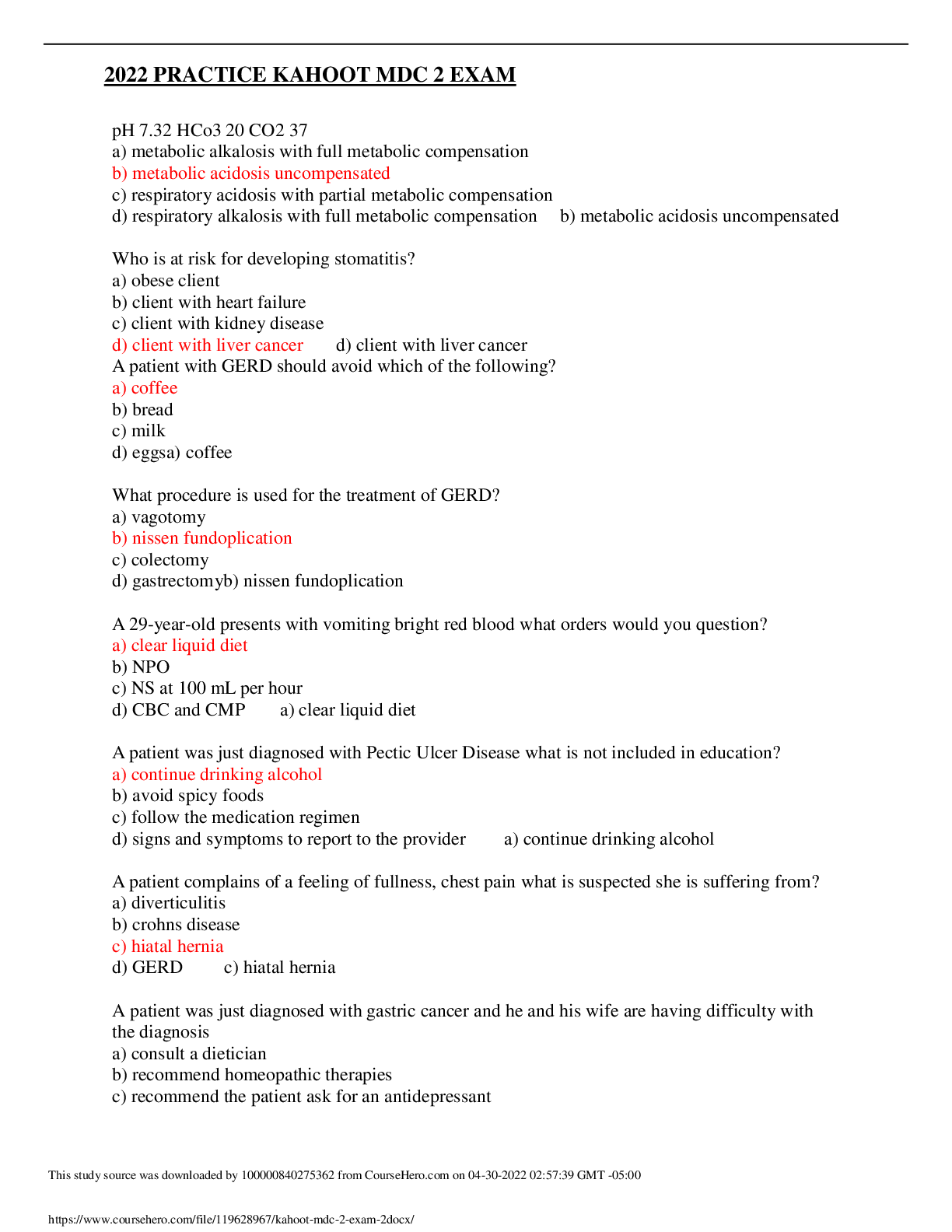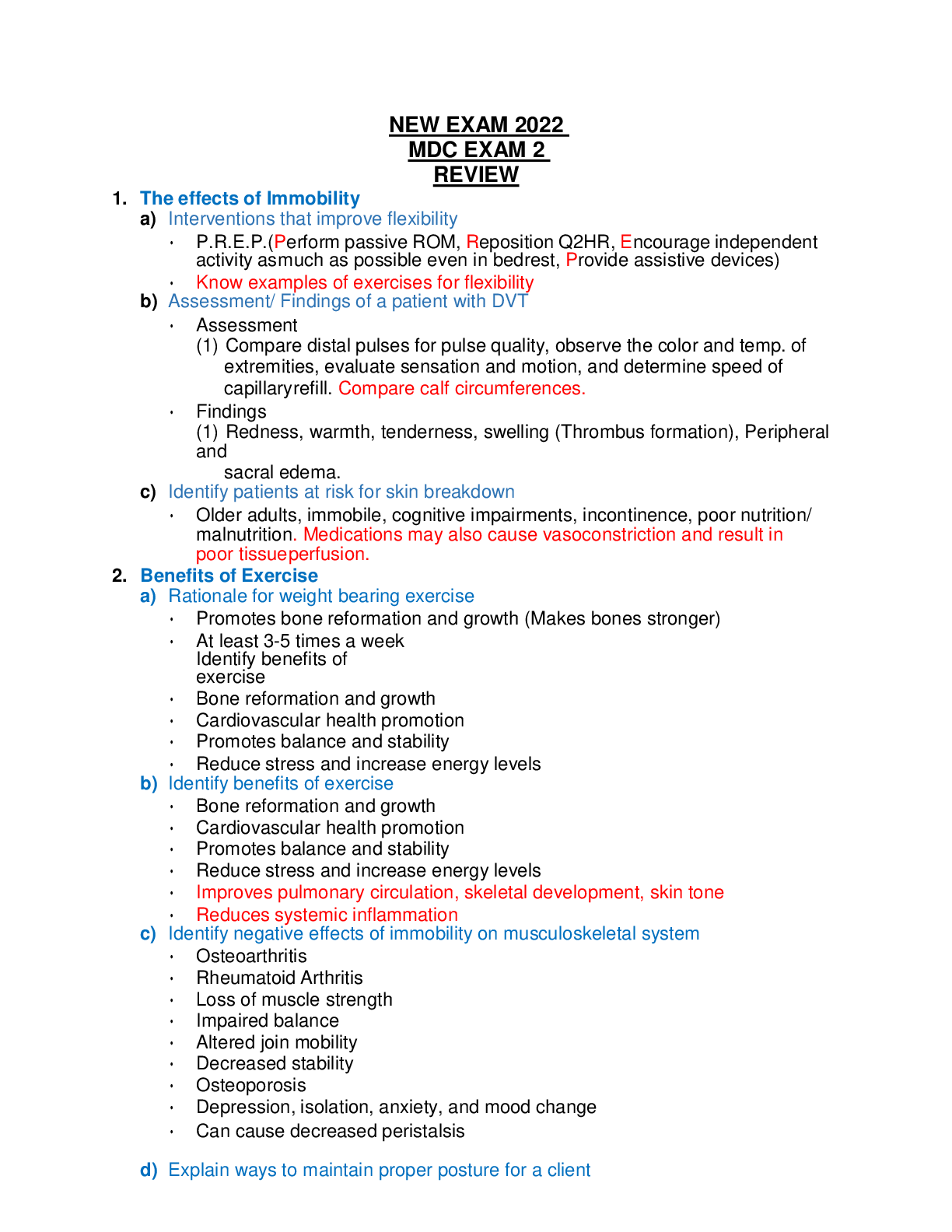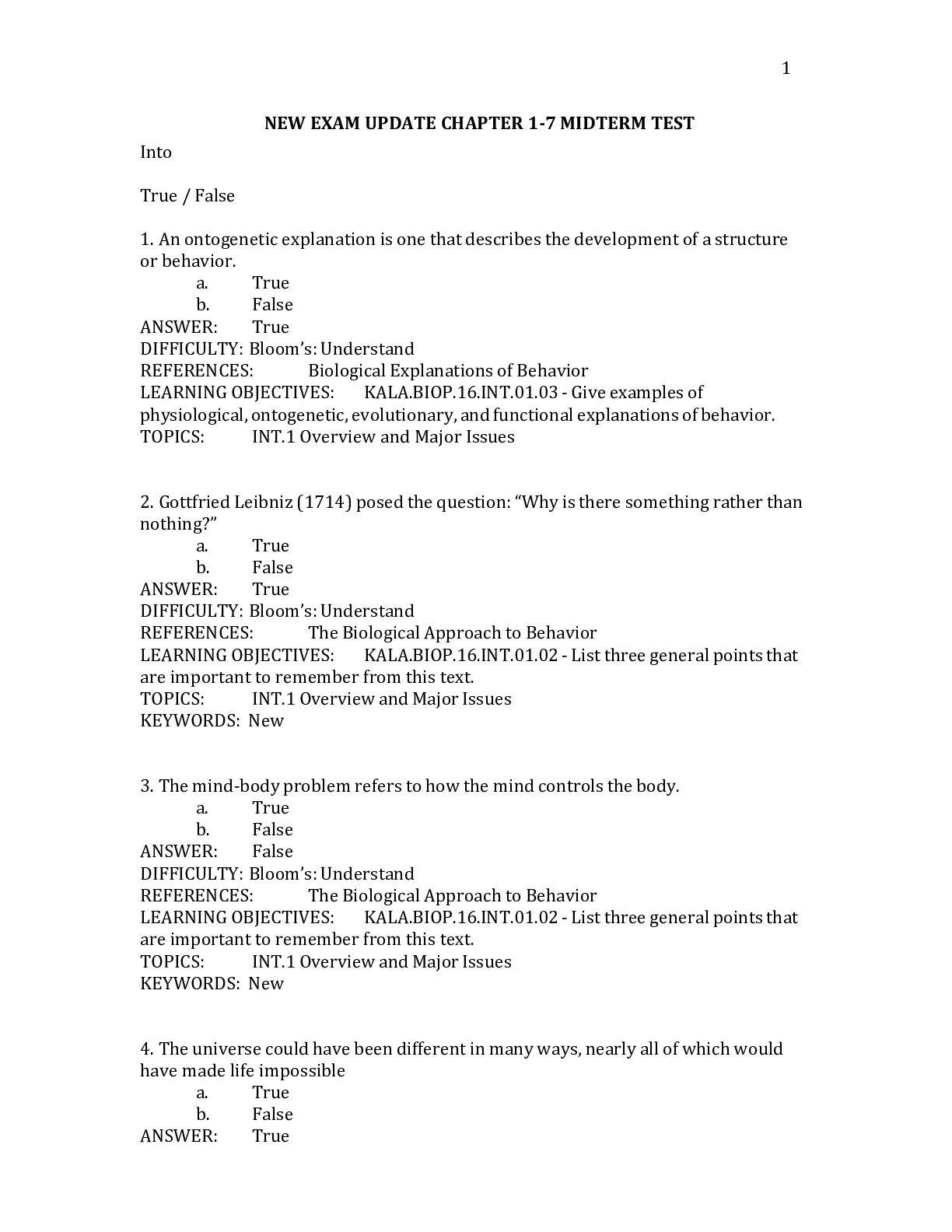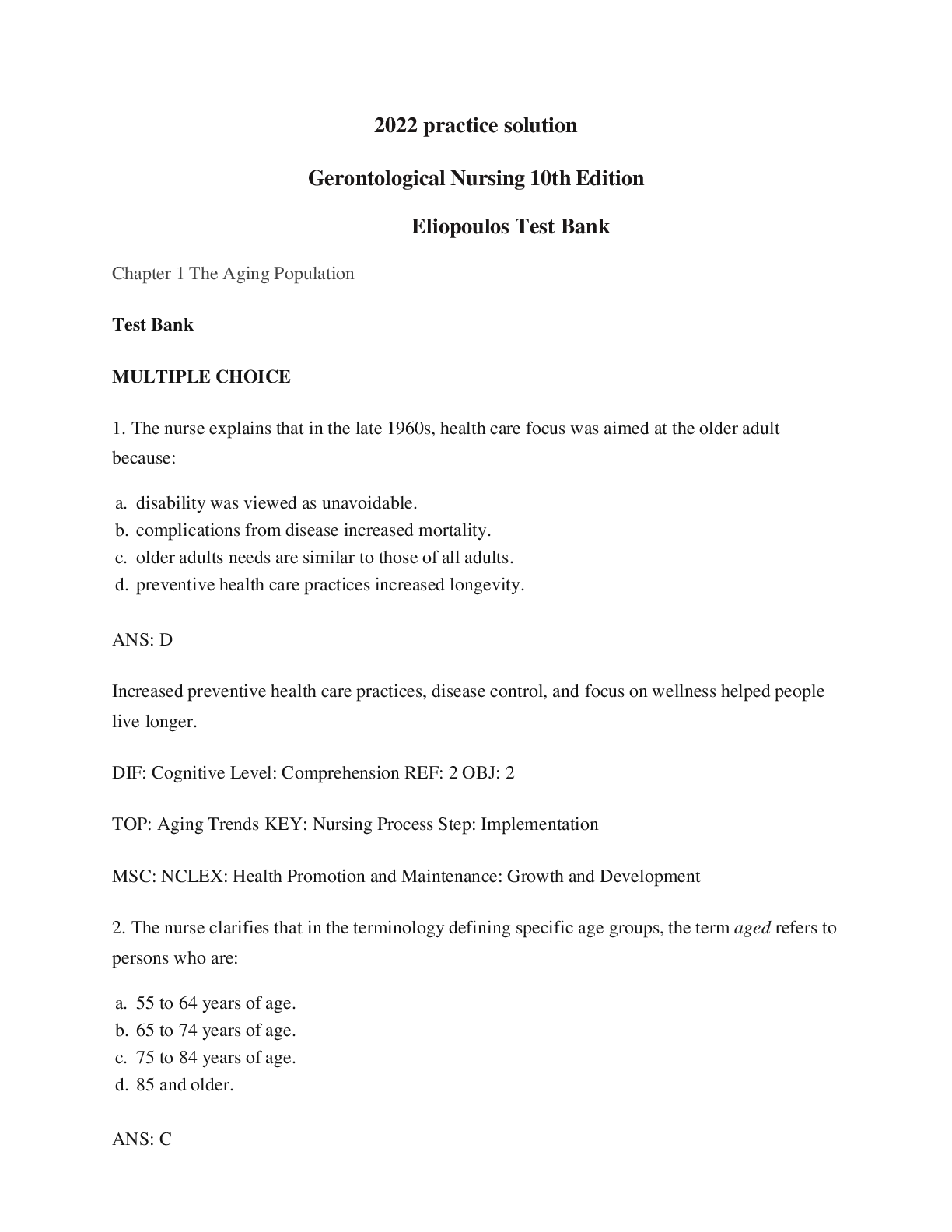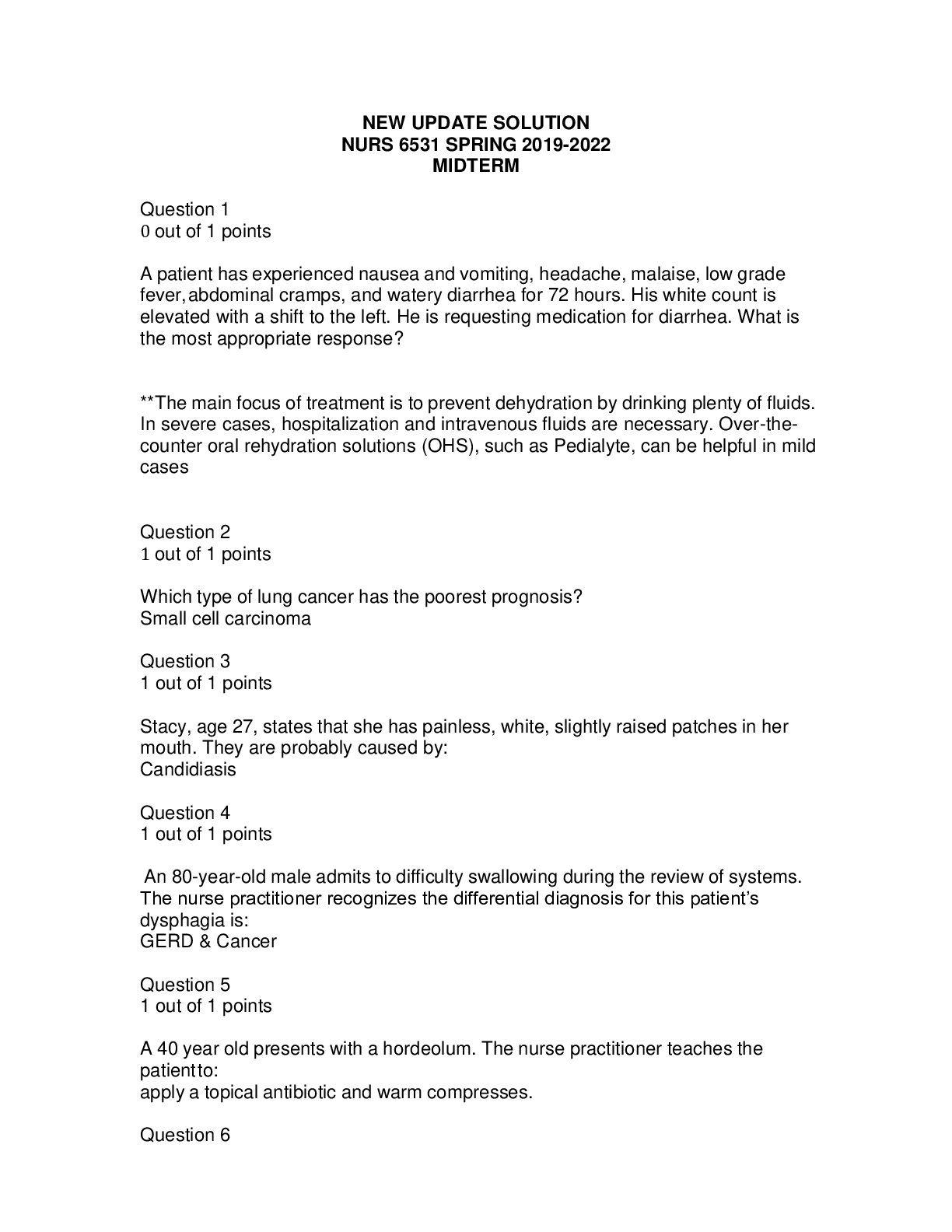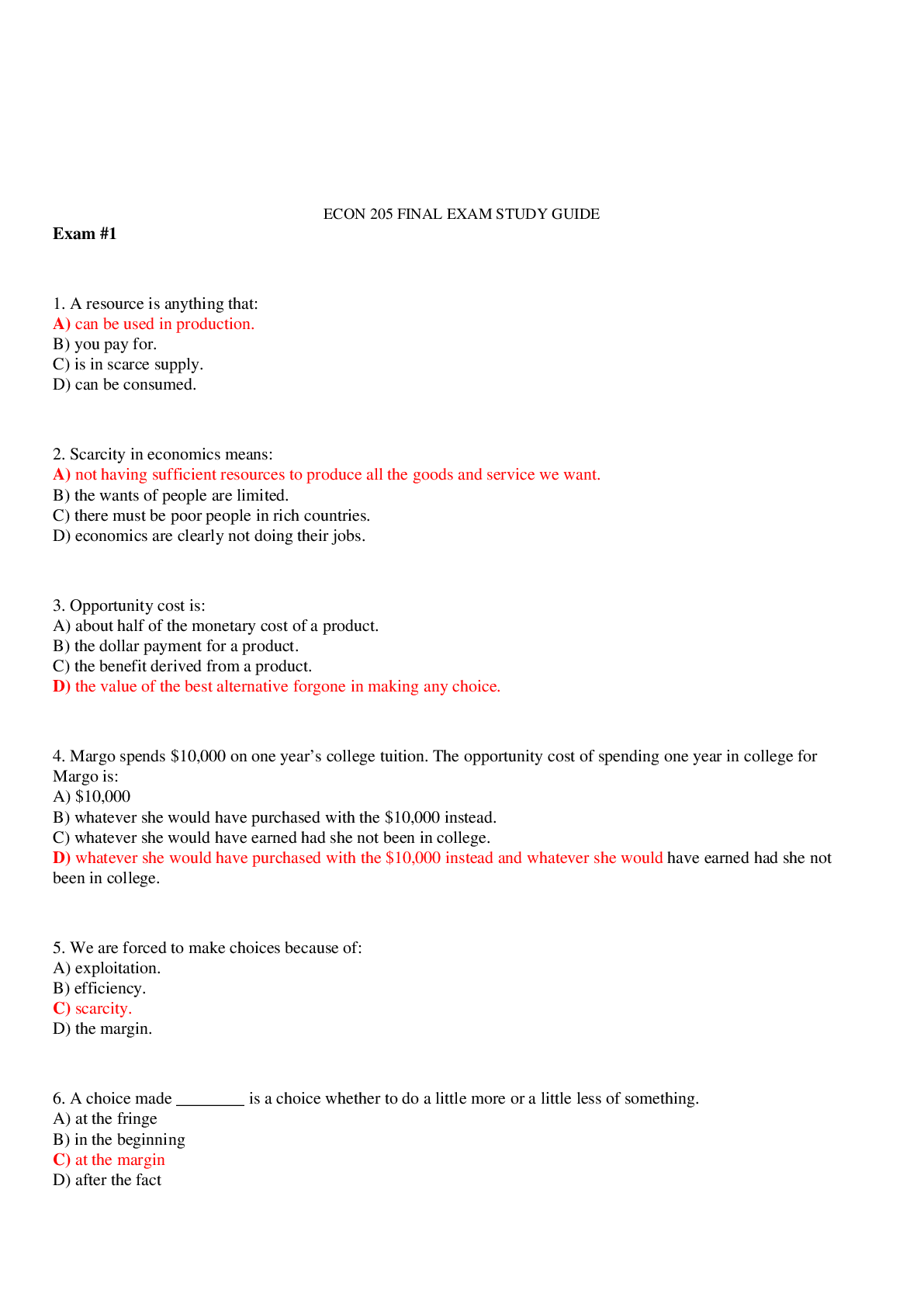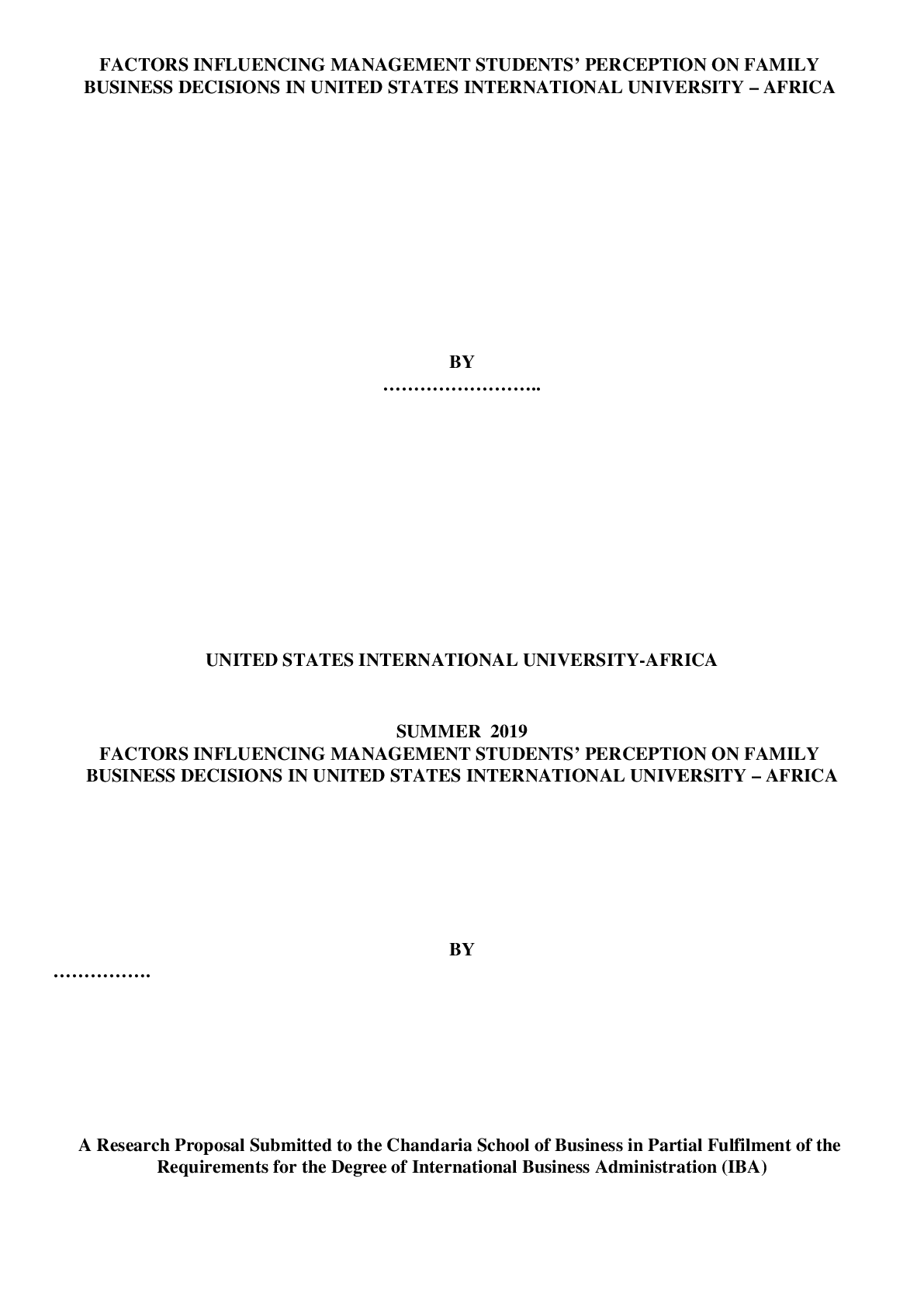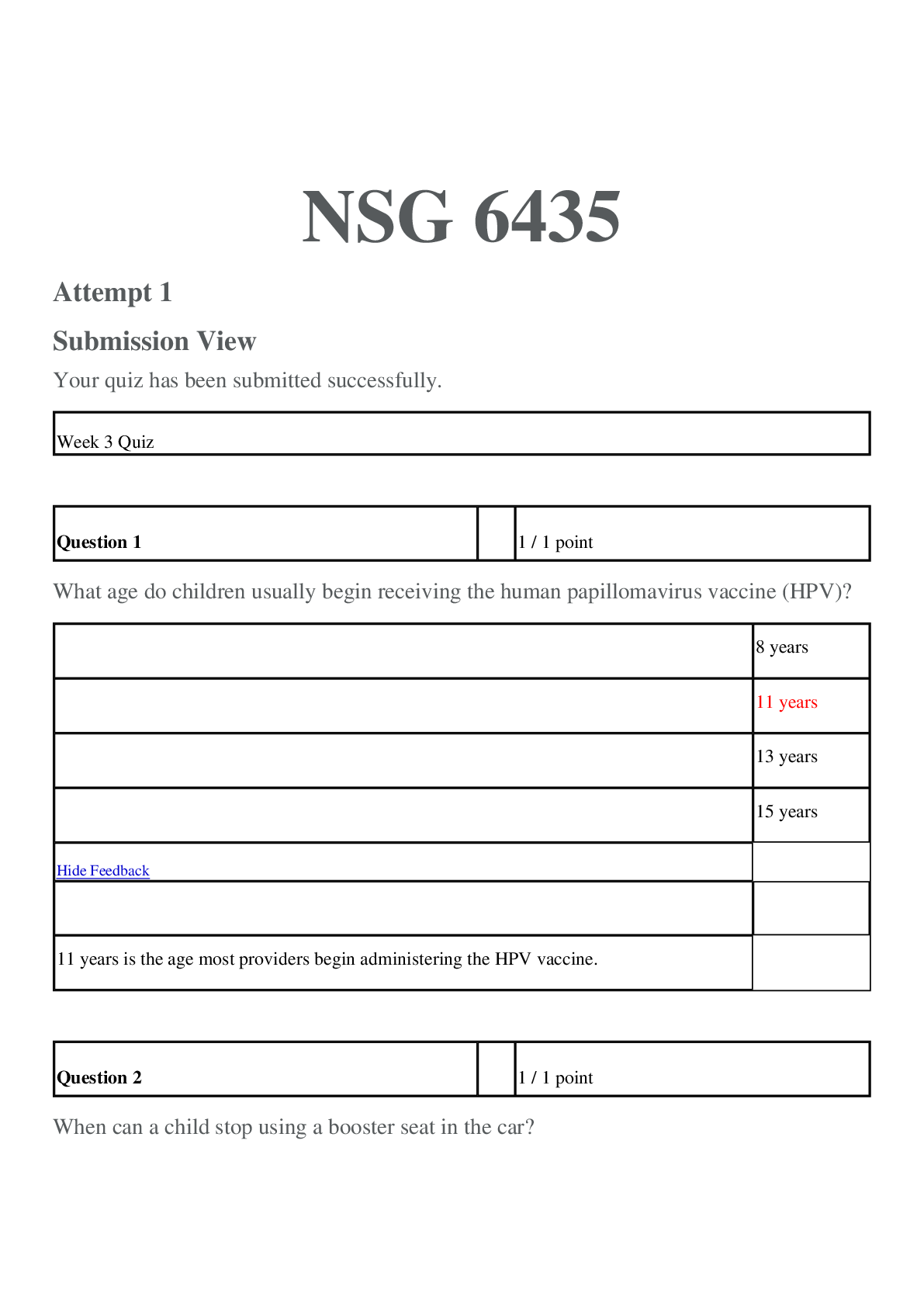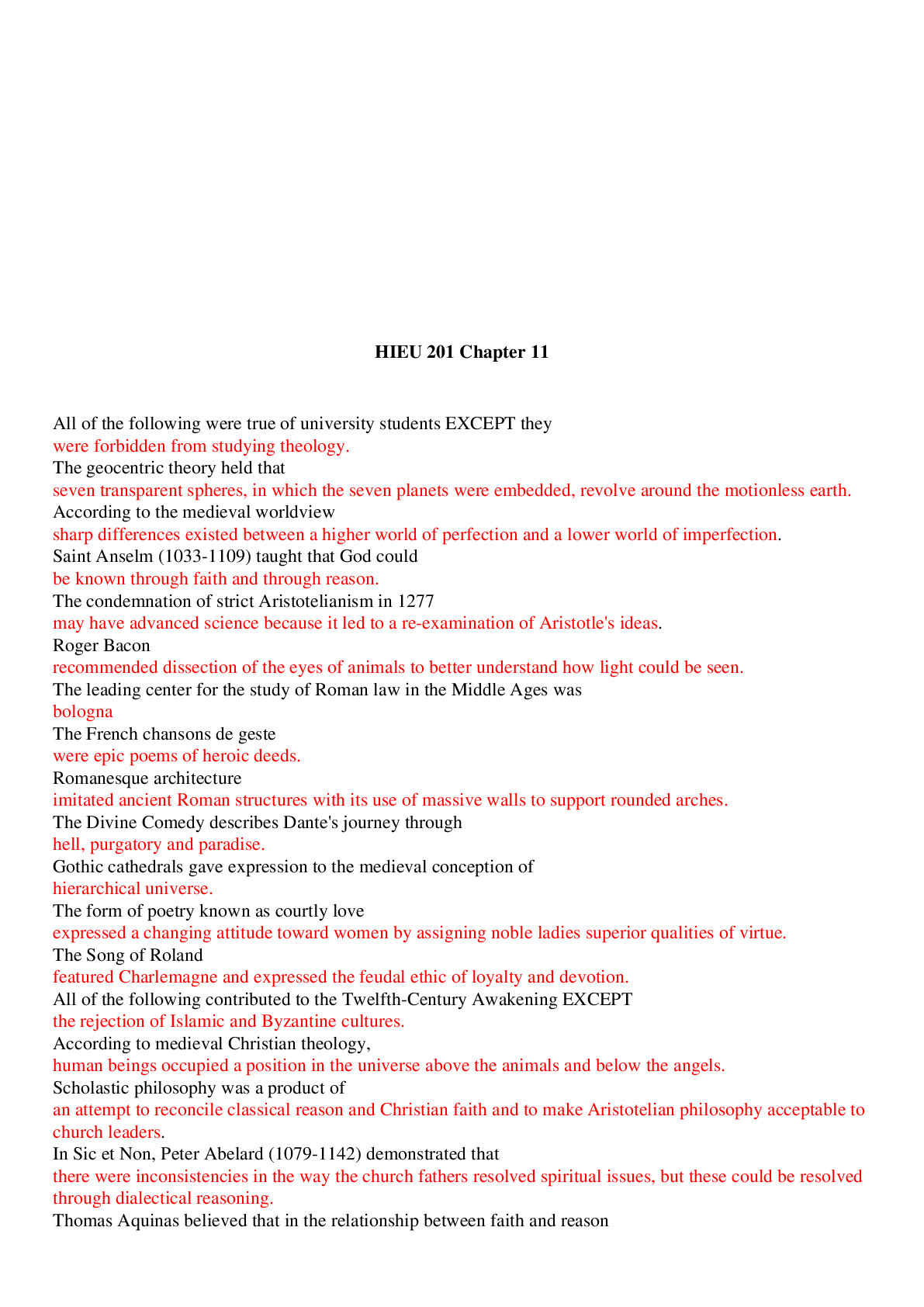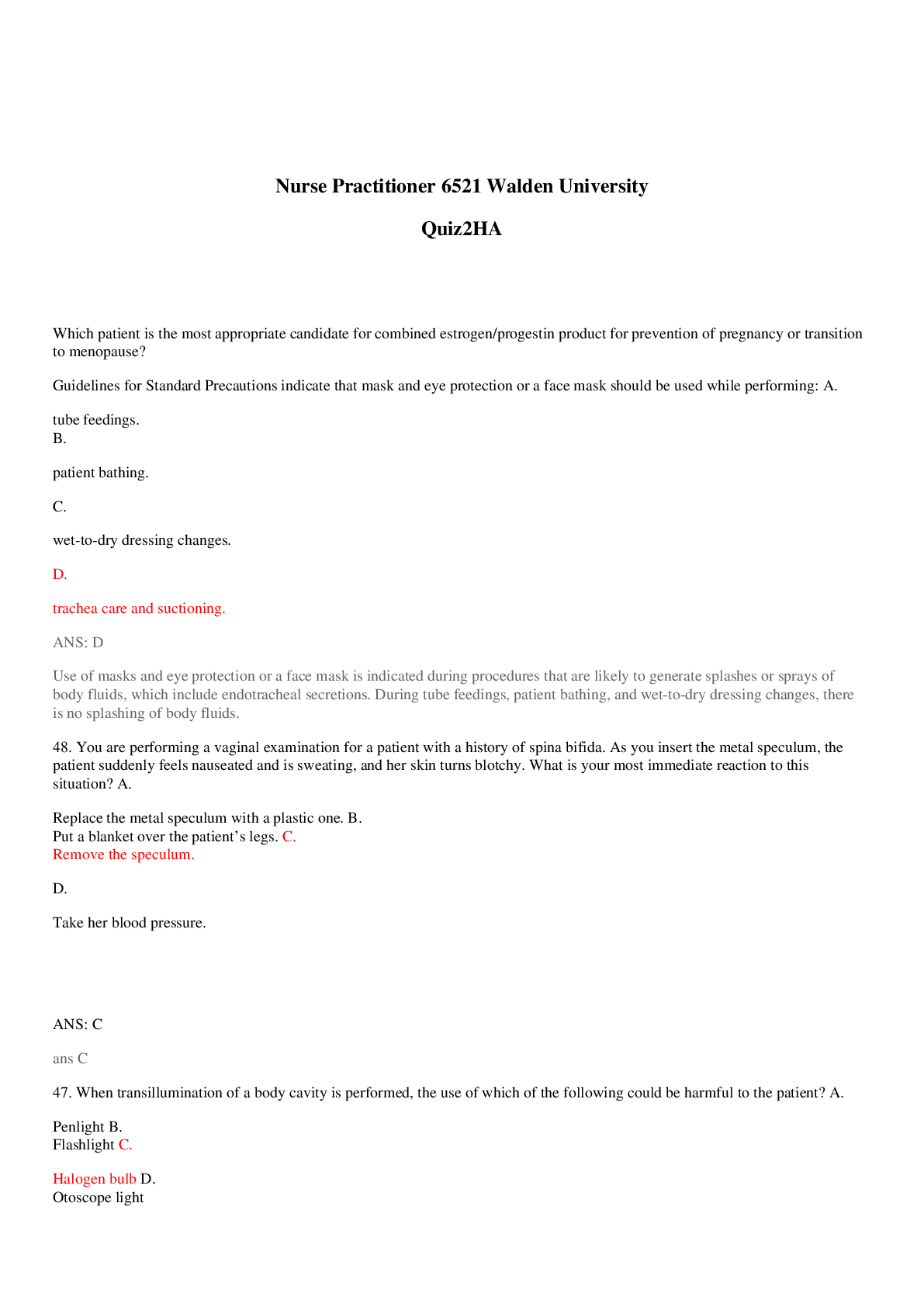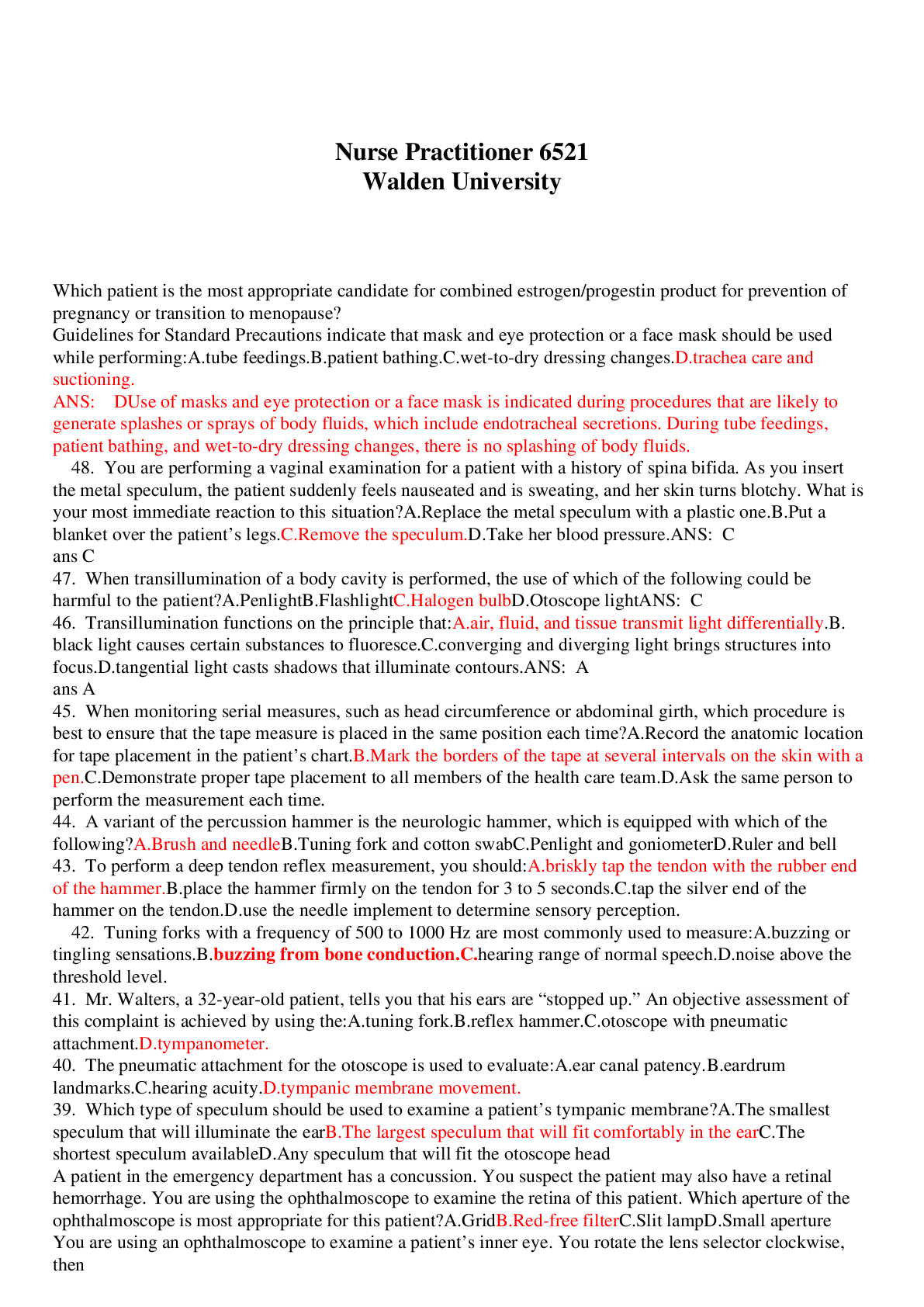Accounting > EXAM > Audit CPA Prep 2022 (All)
Audit CPA Prep 2022
Document Content and Description Below
Audit CPA Prep 2022 1. An audit firm has a responsibility to adopt a system of quality control and establish policies and procedures to provide reasonable assurance that personnel comply with ____... __________. ans: B). A firm of independent auditors has a responsibility to adopt a system of quality control in conducting an audit practice. Thus, a firm should establish quality control procedures to provide it with reasonable assurance that its personnel comply with generally accepted auditing standards (GAAS) in its audit engagements. 2. An audit firm has a responsibility to _______________ in accordance with the applicable legal and regulatory requirements. ans: A), B), and C). A firm of independent auditors has a responsibility to adopt a system of quality control in conducting an audit practice. Thus, a firm should establish quality control procedures to provide it with reasonable assurance that its personnel comply with generally accepted auditing standards in its audit engagements. AU-C 250 states that "the auditor should remain alert to the possibility that other audit procedures applied may bring instances of noncompliance or suspected noncompliance with laws and regulations to the auditor's attention." Also, AU-C 220 states that, "within the context of the firm's system of quality control, engagement teams have a responsibility to implement quality control procedures that are applicable to the audit engagement." 3. Quality control for a CPA firm applies to all ____________ services. ans: C) and D). Quality control for a CPA firm does not explicitly apply to consulting and tax services, but quality control does apply to all review and compilation services. 4. Quality control policies and procedures applicable to a CPA firm should encompass the element(s) of ________________. ans: A) and B). The quality control policies and procedures applicable to a firm's accounting and auditing practice encompass the following elements: •Independence, integrity, and objectivity •Personnel management •Acceptance and continuance of clients and engagements •Engagement performance •Monitoring 5. A CPA firm must appropriately document _______ to properly administer a quality control system. ans: A), C), and D). QC 10 states that the firm should establish policies and procedures requiring (a) appropriate documentation to provide evidence of the operation of each element of its system of quality control, (b) retention of documentation for a period of time sufficient to permit those performing monitoring procedures and peer review of the firm to evaluate the firm's compliance with its system of quality control or for a longer period if required by law or regulation, and (c) documentation of complaints and allegations and responses to them. 6. The form and content of documentation evidencing the operation of each of the elements of the system of quality control depend on factors such as __________________. ans: A), B), and C). QC 10 states, "The form and content of documentation evidencing the operation of each of the elements of the system of quality control is a matter of judgment and depends on a number of factors, including the following: •The size of the firm and the number of offices •The nature and complexity of the firm's practices and organization." 7. Public accounting firms establish a monitoring process involving _____________ to provide reasonable assurance that policies relating to the system of quality control are relevant, adequate, and operating effectively. ans: B) and C). QC 10 indicates that the firm should establish a monitoring process to provide reasonable assurance that policies relating to the system of quality control are relevant, adequate, and operating effectively. This process should include an ongoing consideration and evaluation of the firm's system of quality control, including inspection or a periodic review of engagement documentation, reports, and clients' financial statements for a selection of completed engagements. 8. An effective system of quality control provides reasonable assurance that the firm and personnel follow policies and procedures pertaining to _________________. ans: A), B), and C). QC 10 indicates that the firm must establish and maintain a system of quality control, which should include policies and procedures addressing each of the following elements:a.Leadership responsibilities for quality within the firm (the tone at the top) b.Relevant ethical requirements c.Acceptance and continuance of client relationships and specific engagements d.Human resources e.Engagement performance f.Monitoring 9. An effective system of quality control provides reasonable assurance that the firm and personnel comply with the AICPA Code of Professional Conduct's fundamental principles of professional ethics. These principles include _________________. ans: A), D), and E). QC 10 states, "The AICPA Code of Professional Conduct establishes the fundamental principles of professional ethics, which include the following:•Responsibilities •The public interest •Integrity •Objectivity and independence •Due care •Scope and nature of services." 10. The timing of periodic inspections to evaluate quality control over the audits of public companies by a CPA firm is dependent upon factors such as ___________________. ans: A), B), and C). According to QC 10, •The need for, and extent of, inspection procedures depends, in part, on the existence and effectiveness of other monitoring procedures. The nature of inspection procedures varies based on the firm's quality control policies and procedures and the effectiveness and results of other monitoring procedures. •The inspection of a selection of completed engagements may be performed on a cyclical basis. For example, engagements selected for inspection may include at least one engagement for each engagement partner over an inspection cycle that spans 3 years. The manner in which the inspection cycle is organized, including the timing of selection of individual engagements, depends on many factors, such as the following:◾The size of the firm ◾The number and geographical location of offices ◾The results of previous monitoring procedures ◾The degree of authority of both personnel and office ◾The nature and complexity of the firm's practice and organization ◾The risk associated with the firm's clients and specific engagements 1. Typically involves only two parties. ans: Consulting services. Consulting services generally only involve the user and the CPA, whom the user pays. 2. Results in a written conclusion about subject matter or a written assertion of another party. ans: Attestation services. The result of an attestation engagement is a written conclusion about subject matter or a written assertion of another party. 3. The CPA is independent and the level of assurance can be explicit or implicit. ans: Assurance and advisory services. The definition of assurance and advisory services includes a provision that the CPA be independent of the client. Also, assurance services provide flexible levels of assurance. 4. Obtained by the client for the purposes of making better decisions. ans: Assurance and advisory services. The objective of assurance and advisory services is better decision making. 5. The CPA makes recommendations based on management's objectives. ans: Consulting services. In a consulting engagement, the CPA recommends actions to management based on their objectives in order to achieve better outcomes. Audit ans: Positive assurance. Positive assurance is provided by the opinion in an audit. Compilation ans: No assurance. No assurance is provided. A compilation report contains a disclaimer of opinion. Agreed-upon procedures ans: No assurance. Agreed-upon procedures engagements provide the results of the procedures but offer no assurance. Review ans: .Limited assurance. A review provides limited assurance but offers no opinion. Examination ans: Positive assurance. An examination, like an audit, provides positive assurance expressed as an opinion. Preparation ans: No assurance. No assurance is provided, and no report is presented. 1. Recorded transactions and events actually took place. ans: Occurrence. Occurrence relates to the representation that transactions and events actually took place. 2. Amounts and other data were recorded appropriately. ans: Accuracy. Accuracy relates to the representation that amounts and other data were recorded appropriately. 3. All assets, liabilities, and equity interests that should have been recorded were recorded. ans: Completeness. Completeness relates to the representation that all valid transactions were recorded. 4. Financial information is appropriately presented and described, and disclosures are clearly expressed. ans: Classification and understandability. Classification and understandability relates to the representation that items have been properly described and disclosed in the financial statements. 5. Transactions and events were recorded in the proper period. ans: Cutoff. Cutoff relates to the representation that transactions and events were recorded in the proper period. 6. Assets, liabilities, and equity interest are included at appropriate amounts and adjustments are appropriately recorded. ans: Valuation and allocation. Valuation and allocation relates to the representation that balance sheet items are recorded at the properly valued amounts and adjustments to the balances are appropriately determined and recorded. 7. The entity owns the assets, and liabilities are its obligations. ans: Rights and obligations. The rights and obligations assertion relates to the representation that assets are owned and liabilities are owed. 8. Assets, liabilities, and equity interests are bona fide. ans: Existence. Existence relates to the representation that balance sheet items are real. During the audit of a nonissuer, the engagement team discovers that the accounts payable clerk was writing checks to fictitious vendors. Which paragraph in the professional standards establishes the requirement(s) the auditor should follow when considering whether to continue the engagement? Enter your response in the answer fields below. Guidance on correctly structuring your response appears above and below the answer fields. ans: Answer: AU-C 240.38 AU-C Section 240 -- Consideration of Fraud in a Financial Statement Audit Auditor Unable to Continue the Engagement .38 If, as a result of identified fraud or suspected fraud, the auditor encounters circumstances that bring into question the auditor's ability to continue performing the audit, the auditor should a.determine the professional and legal responsibilities applicable in the circumstances, including whether a requirement exists for the auditor to report to the person or persons who engaged the auditor or, in some cases, to regulatory authorities; b.consider whether it is appropriate to withdraw from the engagement, when withdrawal is possible under applicable law or regulation; and c.if the auditor withdrawsi.discuss with the appropriate level of management and those charged with governance the auditor's withdrawal from the engagement and the reasons for the withdrawal, and ii.determine whether a professional or legal requirement exists to report to the person or persons who engaged the auditor or, in some cases, to regulatory authorities, the auditor's withdrawal from the engagement and the reasons for the withdrawal (Ref: par. .A63-.A66). 1. This type of engagement requires an accountant to obtain a sufficient understanding of a company's internal control. ans: Audit. An auditor should obtain an understanding of the entity and its environment, including its internal control, to identify and assess the risks of material misstatement, whether due to fraud or error, at the financial statement and relevant assertion levels. 2. This type of engagement consists of an accountant presenting management's information in statement form, including a disclaimer expressing no assurance. ans: Compilation. A compilation is a presentation in statement form of information that is the representation of management. This report includes a disclaimer and provides no assurance to external users of the financial statements. 3. This type of engagement requires an accountant to make inquiries and apply analytical procedures but does not provide positive assurance. ans: Review. A review requires the use of analytical procedures, but only provides limited assurance to external users of the financial statements. 4. Expressing an opinion on whether a client's financial statements are presented fairly, in all material respects, in accordance with GAAP, constitutes this type of engagement. ans: Audit. An auditor should obtain reasonable assurance about whether the financial statements as a whole are free of material misstatement, whether due to fraud or error. The auditor thereby is enabled to express an opinion on whether the statements are fairly presented, in all material respects, in accordance with GAAP. Accordingly, the auditor should design and perform audit procedures to obtain sufficient appropriate audit evidence to be able to draw reasonable conclusions on which to base the auditor's opinion. 5. This type of engagement occurs when the accountant serves on the client's board of directors and prepares financial statements and a report with a statement that (s)he is not independent. ans: Compilation. An accountant does not need to be independent to perform compilation services but should indicate the lack of independence in the compilation report. 6. During this type of engagement, an accountant must obtain sufficient evidence from testing management's assertions to express an opinion. ans: Audit. An auditor should obtain reasonable assurance about whether the financial statements as a whole are free of material misstatement, whether due to fraud or error. The auditor thereby is enabled to express an opinion on whether the [Show More]
Last updated: 1 year ago
Preview 1 out of 12 pages
Instant download
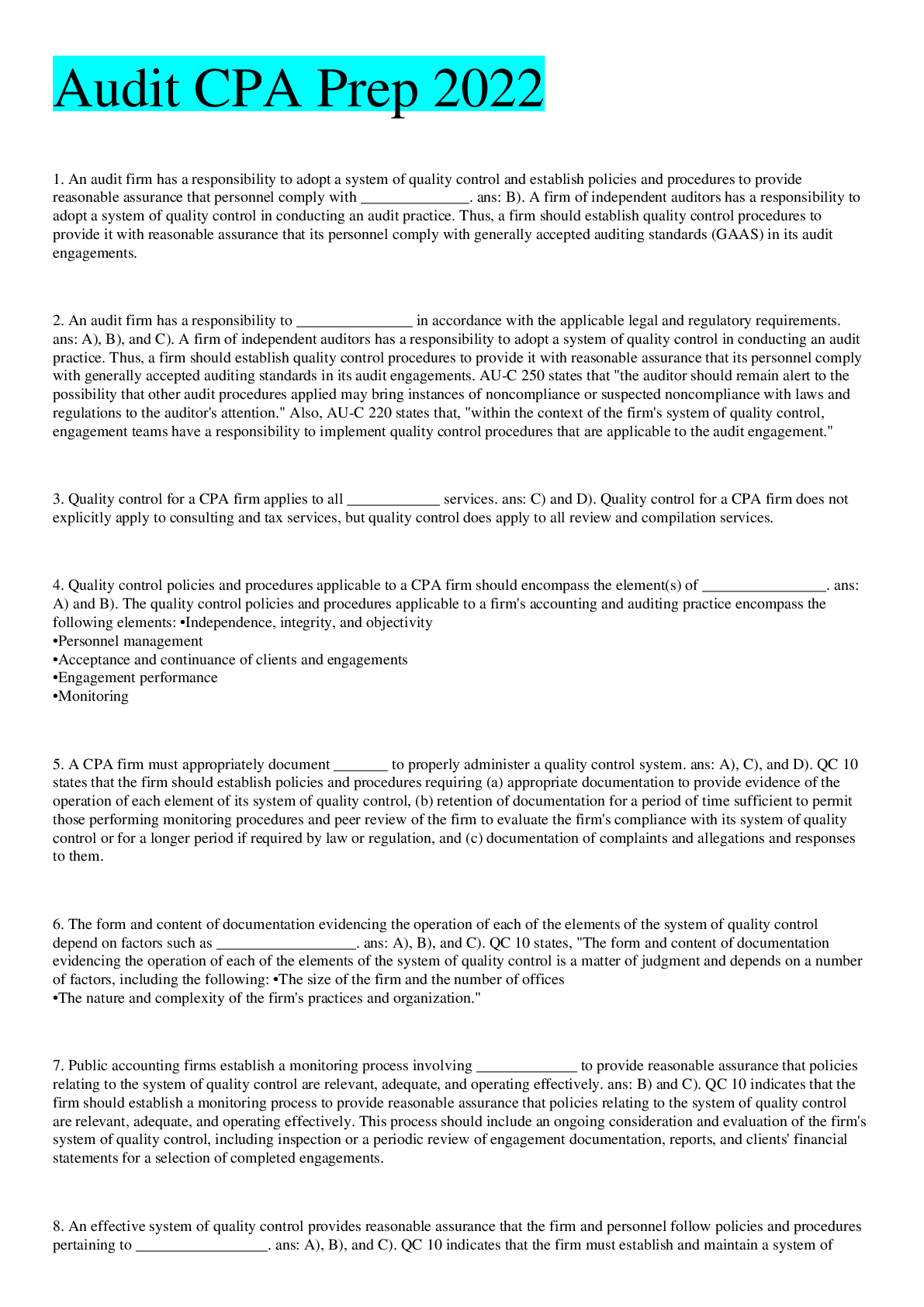
Buy this document to get the full access instantly
Instant Download Access after purchase
Add to cartInstant download
Reviews( 0 )
Document information
Connected school, study & course
About the document
Uploaded On
Aug 29, 2022
Number of pages
12
Written in
Additional information
This document has been written for:
Uploaded
Aug 29, 2022
Downloads
0
Views
43

